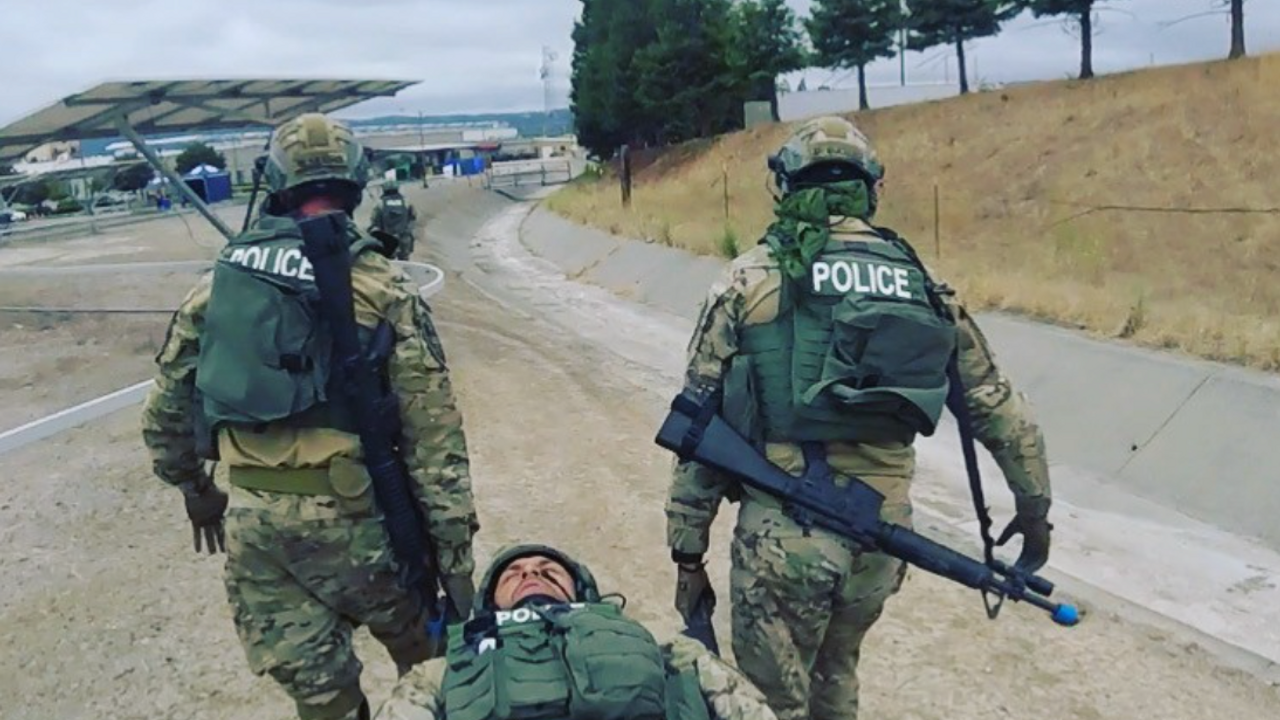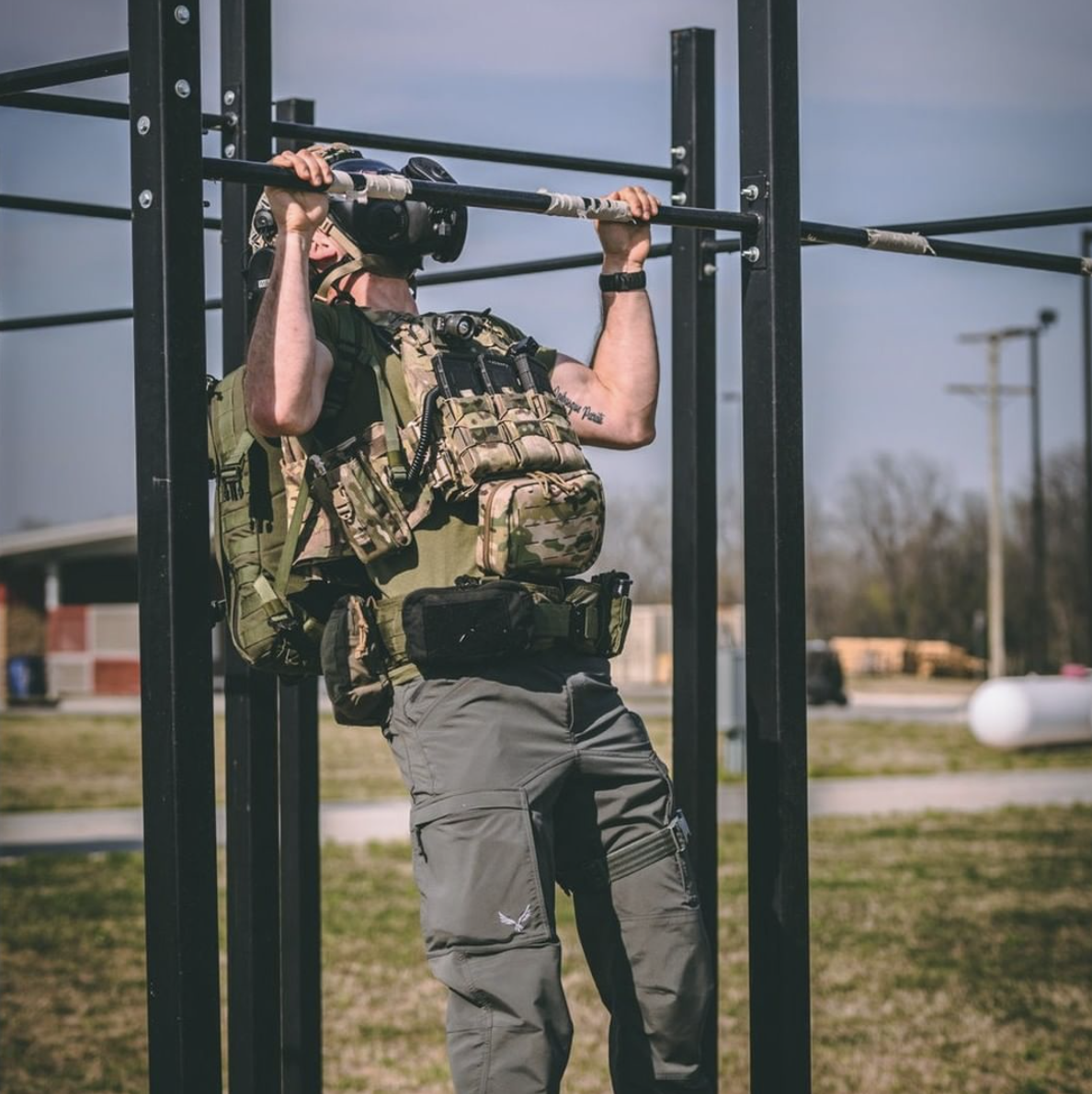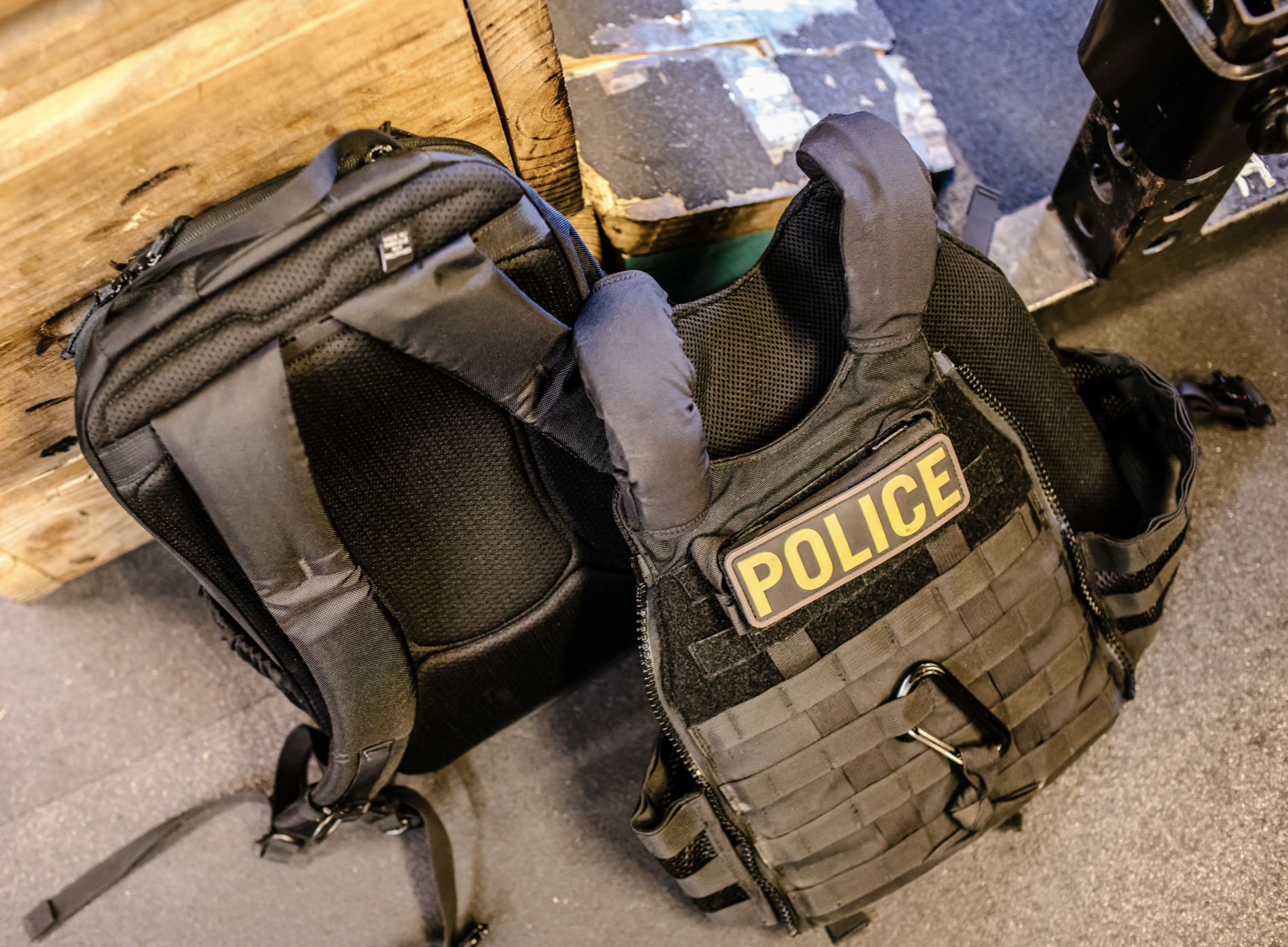4 Reasons Police Should Train with a Weight Vest
Jun 12, 2022
On a day to day basis, police officers around the world are lugging around 20-50lbs of gear on their body via their duty belt and/or outer carriers.
As you know, this is a necessary evil; officers need to be prepared for endless potential incidents, but this added weight can take a toll physically on the body and its structures/tissues, as well as impacting the officer’s mobility, speed, agility, coordination, heart rate, reaction time, V02 max, memory and cognitive function during operational tasks.
The good news is that we can optimize our body and brain to better handle this excess weight. Body composition and body fat percentage both play a huge role in load carriage ability. Having adequate strength, aerobic fitness and lean mass with a lower body fat content will improve your ability to carry external loads for long periods of time. This is known as Load Carriage Optimization.
In this article, we will be reviewing the Top 4 Reasons Cops Should Train (physical fitness training) with a Weight Vest!
#1) Improve Occupational Performance
As the Law of Specificity states, the only way to get better at a specific skill is to train and practice that particular skill you are looking to get better at. If you want to get better at performing under heavy load or in full kit, you must replicate that in your physical training.
There is a plethora of solid research showing that your duty gear hinders your physical capabilities. One particular study concluded that as the weight you’re carrying on your duty belt increases, the more detrimental it is to your ability to accelerate, how fast you are able to go, and your mobility, which all could be harmful in UOF or other critical situations.
If we think about occupational tasks, there are a handful of things that should always be in our programming (they are always in the Effective Fitness Program):
- Deadlifts
- Bodyweight pushing and pulling movements
- Heavy carries such as Farmers Walks, Suitcase and Overhead Carries
- Some variation of running and sprinting
- Agility and footwork
- Drags such as Sled Pulls, Dummy Drags, Sandbag Drags (from crawling position)
- Get Ups, Burpees or some variation of getting on and off the ground
Of course, the goal is always to perform better and to constantly aiming to be Above the Standard™. To do that, we have to “train how we fight.”
By training all of the above on a regular basis, and in general working to constantly maintain and improve your health and wellness, your performance on the job WILL improve.
Free Program - 4 Week Body Armor Training Protocol

#2) Reduce Risk of Injury In Critical Incidents
Not only does load carriage increase your risk of injury, it also increases the potential for casualty.
The most common load carriage injuries are seen in the lower extremities (knees, ankles, feet, hips) and the low back. In addition to that list, we see the occasional shoulder/upper back injury, as well as some compressed nerve issues; none of which are fun to deal with.
One study that is available in the International Journal of Exercise Science was focused on finding the why behind Law Enforcement Officers experiencing low back pain. They found that there were differences in gait and trunk posture due to gear load carried on a gear belt and a gear vest. These altered biomechanics and stress on the lower body, the feet in particular, by just simply walking with the external load can increase the risk of musculoskeletal injuries.
By training in your gear and/or a weighted vest multiple times per month, this prepares 1) your brain and 2) your body’s tissue capacity to handle that external load. You can (and will) also develop better movement patterns with that added load and restrictive gear that will reduce the risk of injury in itself.
View this post on Instagram
Free Program - 4 Week Body Armor Training Protocol
#3) Familiarity with Gear - Always Pressure Test
It is VERY important that you test and evaluate your gear… BEFORE you are on shift, before you are involved in an incident, before you are suffering because you chose not to acclimate to your gear.
You may have outstanding mobility when you’re in gym shorts and a t-shirt - but what about when you put on your uniform? Restrictive clothing has a major impact on your mobility and your ability to get in and out of the common and uncommon positions. Even a basic squat can become altered and very ugly by adding some tight and non-stretchy pants to the mix.
On top of that, you have your belt, mag pouches, mags, handgun, TQs, radio, body cam… the list goes on.
KNOW how this affects your body and mind.
KNOW how the additional weight alters your movement.
KNOW how the weight distribution on your belt and vest can be an advantage or a disadvantage.
KNOW how every bit of it affects your movement, coordination, speed and agility.
KNOW how all of the above can hinder your decision making skills, reaction time, and cognitive abilities.
Pressure testing your gear is a prerequisite to being on duty.
Free Program - 4 Week Body Armor Training Protocol
#4) Minimal Equipment Tool
If you are looking for affordable home gym equipment, you should definitely consider purchasing a weight vest, especially if you are not able/prefer not to use your duty gear for fitness training.
Remember, a training vest does not have to be fancy or flashy. It needs to be functional and it needs to add load to your upper body. Period.
Wearing a plate carrier is one of the simplest ways to make bodyweight exercises more difficult; things such as pushups, pullups, burpees, squats, lunges, etc.
In addition to building strength, it is a great tool to build your aerobic base, which is also known as endurance or stamina. Weight vests are a great option for rucking, running, step ups/stair climbs, or even increasing the challenge of a simple walk. Any of you that wear one on shift know that adding a weighted vest just makes walking more difficult! It will elevate your heart rate and have you breathing heavier than if it weren’t on.

Free Program - 4 Week Body Armor Training Protocol
Training Recommendations:
Regular training in the gym such as squats, deadlifts, presses, trunk strength grinds, aerobic and anaerobic conditioning, etc. will all help with load carriage optimization, but we do highly recommend training with a weight vest 2-4x per month.
On top of that, we would recommend training in full kit 1-2x per month to familiarize yourself with your gear. This doesn’t have to be a full blown training session, but you should train some basic bodyweight movements such as pushups, pullups, squats, technical stand ups, etc.
Take note of the following:
- How does it influence your movement patterns?
- Can you get up and down off the ground quickly and efficiently?
- Does your uniform and the added weight restrict your mobility?
- Does the tightness and pressure of your carrier affect your breathing?
These things need to be pressure tested BEFORE you are on shift. You should already know your potential limitations and how all of that gear will affect your physical and mental abilities.

